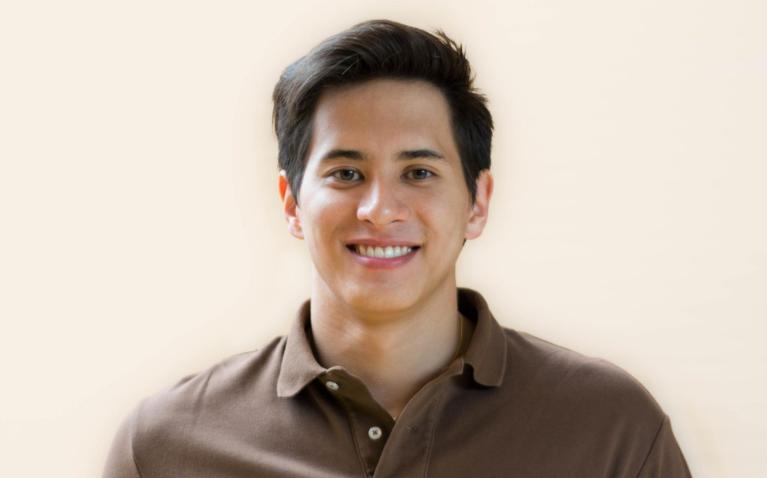
Justin Wyss
Doctor of Philosophy in Biomedical Engineering (PhD)
Research Topic
Soft Sensing Technology Designed for Pressure Ulcer Prevention
Implantable biosensors for monitoring organ health and function,
Spinal cord hemodynamics monitoring,
Bone healing research,
Graduate students and researchers with a background in biosensor engineering, optics, physiological signal processing.
Graduate students and researchers with clinical training and interest in musculoskeletal medicine, sports and exercise medicine, neuroscience, reconstructive surgery and organ transplant care.
G+PS regularly provides virtual sessions that focus on admission requirements and procedures and tips how to improve your application.
These videos contain some general advice from faculty across UBC on finding and reaching out to a potential thesis supervisor.
Theses completed in 2010 or later are listed below. Please note that there is a 6-12 month delay to add the latest theses.
Free tissue transfer (FTT) is a surgical procedure that involves taking tissue from one area of the body and transplanting it to a surgical wound. Vascular complications to the tissue can result in FTT failure, and the transplanted tissue can die. Early detection of vascular compromise is critical for successful salvage of the transplanted tissue. Near-infrared spectroscopy (NIRS) has the potential to provide continuous and non-invasive monitoring of FTT hemodynamics and oxygenation. However, there are currently no commercially available NIRS systems with a small enough sensor probe to be used in the head and neck region. A novel NIRS system with a miniaturized implantable sensor was developed for FTT monitoring in head and neck surgery. The objectives of this study were to obtain post-operative NIRS measurements on a cohort of patients undergoing FTT surgery for a head and neck reconstruction and to evaluate the patient’s and clinician’s experience with the novel NIRS monitoring method. Four adult participants undergoing a FTT operation for a head and neck reconstruction were recruited for participation in the study. The NIRS sensor was fixed over the FTT for 72 hours post-operatively to provide tissue oxygenation parameters, including oxygenated hemoglobin (O₂Hb), deoxygenated hemoglobin (HHb), and tissue oxygenation index (TOI). After 72 hours, the patient and clinicians completed a questionnaire to evaluate their experience with the NIRS system. All patients undergoing FTT surgery had a successful operation with no complications to the FTT. The NIRS data showed visible pulsatile O₂Hb signals, indicating sufficient microvascular function and perfusion to the FTT. Furthermore, changes in TOI% of the FTT were within a normal healthy tissue range of 63-93% in all four patients during the monitoring period. The results of the questionnaires indicated that the NIRS sensor did not cause additional discomfort or inconvenience to the patients or clinicians. We demonstrated that the FTT-NIRS system can monitor FTT hemodynamics and oxygenation continuously and non-invasively for 72 hours post-operatively following a head and neck reconstruction. Incorporating a novel NIRS system into routine post-operative care following FTT surgery shows great potential to improve post-operative monitoring and decrease FTT failure rates.
View record
Currently, hemodynamic management is one of the only treatment options to improve neurologic recovery in patients with acute spinal cord injury (SCI). Our team has developed a novel implantable sensor based on near-infrared spectroscopy (NIRS) that is able to monitor spinal cord hemodynamics and oxygenation in real-time following acute SCI. In order to collect data, the NIRS sensor should be in direct contact with the spinal cord and emit near-infrared light into the tissue. As a safety assessment measure, I aimed to study the potential heat generation and contact compression effects of a series of custom implantable NIRS sensors developed in our research laboratory on the spinal cord tissue, as it is important prior to its clinical translation. In Chapter 1, I describe acute SCI and clinical treatment options such as hemodynamic management, as well as using NIRS to monitor spinal cord hemodynamics and improve the management of acute SCI. I also provide a background of NIRS technology, its clinical transcutaneous and novel implantable applications, and its risk factors and safety aspects. In Chapter 2, I investigate the potential heating effect of our spinal cord NIRS sensor using an in vitro setup. In this chapter, I have compiled information for a review article titled "Thermal Threshold for Tissue Damage from Near-Infrared Spectroscopy Sensors," which I plan to submit to a peer-reviewed journal. In Chapter 3, I focus on the potential impact of NIRS sensor compression on the spinal cord tissue in a porcine model of acute SCI. In Chapter 4, I provide a summary, conclusions, and future directions. In the appendix, I provide a summary of the regulatory process for the application of the NIRS sensor (version 5) in the NIRS clinical trial. With these pre-clinical experiments, I have assessed the safety of the first series of the spinal cord NIRS sensors, which will ultimately lead to the design of the newest version of the sensor to be placed on the spinal cord of human SCI patients in a clinical trial. This study could help future studies in evaluating the safety of implantable NIRS sensors.
View record
Member of G+PS
View explanation of statuses
If this is your researcher profile you can log in to the Faculty & Staff portal to update your details and provide recruitment preferences.
